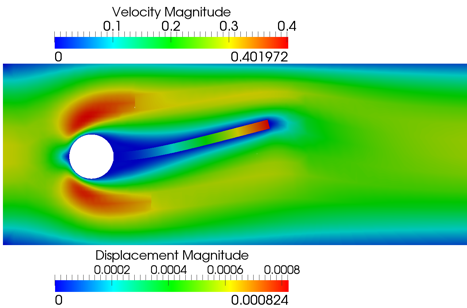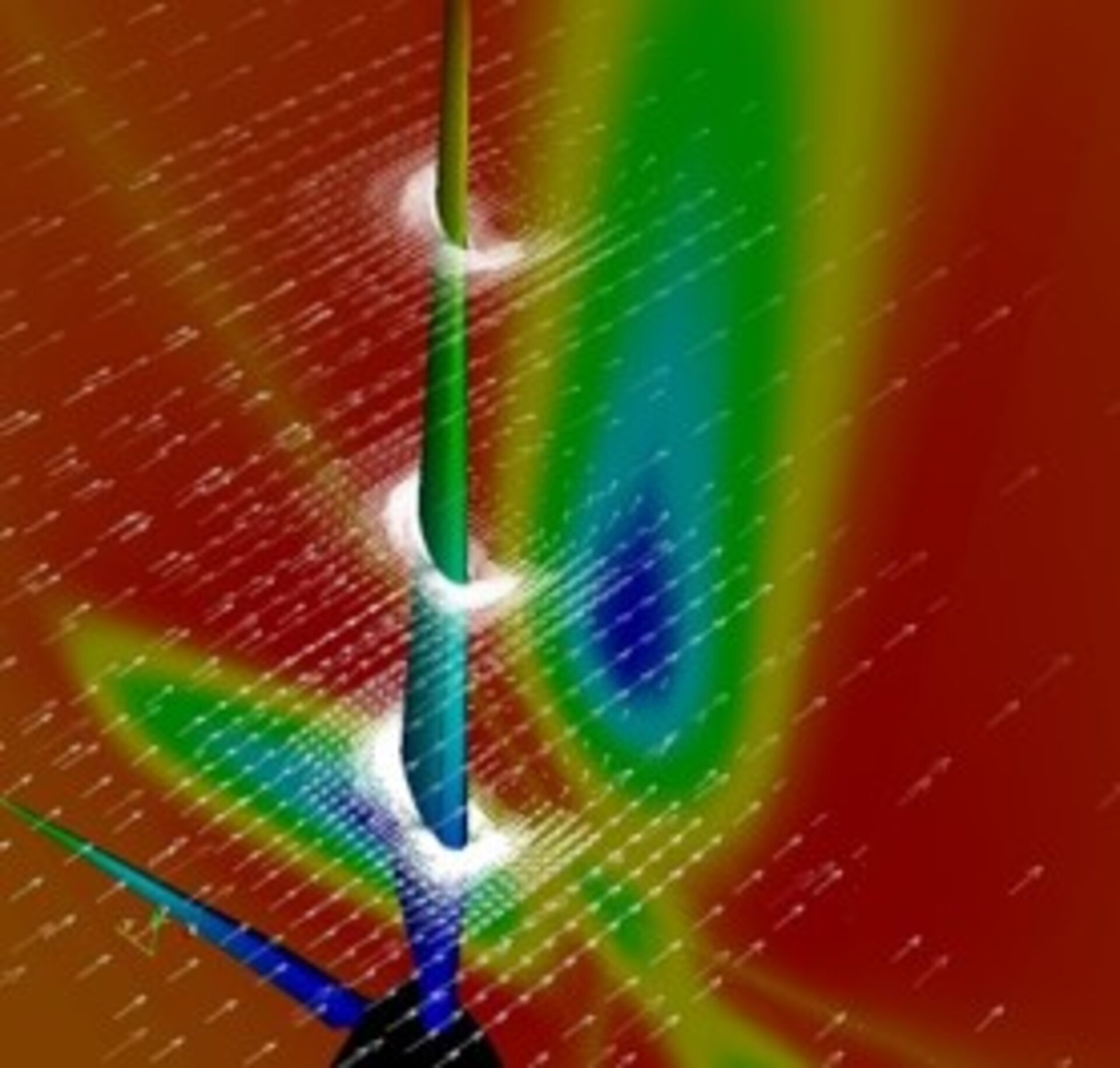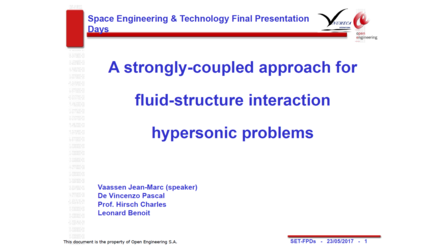Flow-Structure coupling for hypersonic flows Regime – Part 3
| Programme: | GSTP | Achieved TRL: | 5 |
| Reference: | G609-40MZ | Closure: | 2017 |
| Contractor(s): | Prime: Open-Engineering S.A. (BE) | ||
It is of major interest for Space Applications to be able to use numerical solutions to simulate the physical behavior of the structures sent to space. Ariane nozzles are particularly interesting in the context of this project. The simulation of the hypersonic flows that are observed in the nozzles, as well as the exchange of mechanical and thermal energy with the structure is of great interest before creating the actual prototypes
Objectives
The objective is to obtain a user-friendly interface to simulate the behavior of the nozzles (virtual prototype) before the creation of the actual prototypes.

Achievements and status
During the first two phases of the project, the CSM (Computational Structure Mechanics) solver OOFELIE developed by Open-Engineering has been coupled to the CFD (Computational Fluid Dynamics) solver FINE/Open developed by Numeca International. This staggered approach allows to simulate fluid-structure-interaction applications, by taking benefit of two existing robust solutions. The coupling consists in transferring data at the interfaces by MPI protocol and in using very accurate operators for the exchange between non-conform meshes. A powerful approach has been developed to ensure that synchronization is guaranteed between fluid and structure solutions at every time step (strongly-coupled scheme).
Benefits
The coupled solution has proven its capability to simulate complex fluid-structure interaction problems and the strongly-coupled approach provides a very good accuracy compared to a classical approach (weakly-coupled schemes).
Next steps
The current solution can deal with complex flows on quite rigid structures. The next steps will consist in improving the capabilities of the solution to deal with more complex structures, such as non linear ones, composites, membranes … More complex flows are also envisaged, particularly for sloshing problems or for aero-acoustics. Several other fields of physics could also be added.





